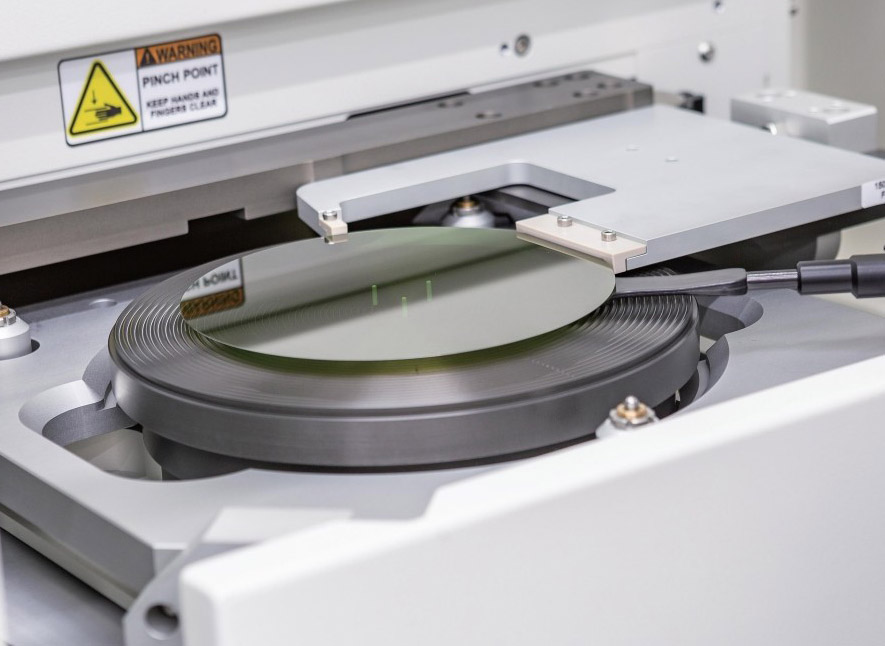
- English
- Español
- Português
- русский
- Français
- 日本語
- Deutsch
- tiếng Việt
- Italiano
- Nederlands
- ภาษาไทย
- Polski
- 한국어
- Svenska
- magyar
- Malay
- বাংলা ভাষার
- Dansk
- Suomi
- हिन्दी
- Pilipino
- Türkçe
- Gaeilge
- العربية
- Indonesia
- Norsk
- تمل
- český
- ελληνικά
- український
- Javanese
- فارسی
- தமிழ்
- తెలుగు
- नेपाली
- Burmese
- български
- ລາວ
- Latine
- Қазақша
- Euskal
- Azərbaycan
- Slovenský jazyk
- Македонски
- Lietuvos
- Eesti Keel
- Română
- Slovenski
- मराठी
- Srpski језик
LPE is the important method for preparing P-type 4H-SiC single crystal and 3C-SiC single crystal
2025-04-11
As a third-generation wide bandgap semiconductor material, SiC (silicon carbide) has excellent physical and electrical properties, which makes it have broad application prospects in the field of power semiconductor devices. However, the preparation technology of silicon carbide single crystal substrates has extremely high technical barriers. The crystal growth process needs to be carried out in a high temperature and low pressure environment, and there are many environmental variables, which greatly affects the industrial application of silicon carbide. It is difficult to grow p-type 4H-SiC and cubic SiC single crystals using the already industrialized physical vapor transport method (PVT). The liquid phase method has unique advantages in the growth of p-type 4H-SiC and cubic SiC single crystals, laying the material foundation for the production of high-frequency, high-voltage, high-power IGBT devices and high-reliability, high-stability, and long-life MOSFET devices. Although the liquid phase method still faces some technical difficulties in industrial application, with the promotion of market demand and continuous breakthroughs in technology, the liquid phase method is expected to become an important method for growing silicon carbide single crystals in the future.

Although SiC power devices have many technical advantages, their preparation faces many challenges. Among them, SiC is a hard material with a slow growth rate and requires high temperature (over 2000 degrees Celsius), resulting in a long production cycle and high cost. In addition, the processing process of SiC substrates is complicated and prone to various defects. At present, silicon carbide substrate preparation technologies include PVT method (physical vapor transport method), liquid phase method and high-temperature vapor phase chemical deposition method. At present, large-scale silicon carbide single crystal growth in the industry mainly adopts PVT method, but this preparation method is very challenging to produce silicon carbide single crystals: first, silicon carbide has more than 200 crystal forms, and the free energy difference between different crystal forms is very small. Therefore, phase change is easy to occur during the growth of silicon carbide single crystals by PVT method, which will lead to the problem of low yield. In addition, compared with the growth rate of silicon pulled single crystal silicon, the growth rate of silicon carbide single crystal is very slow, which makes silicon carbide single crystal substrates more expensive. Second, the temperature of growing silicon carbide single crystals by PVT method is higher than 2000 degrees Celsius, which makes it impossible to accurately measure temperature. Third, the raw materials are sublimated with different components and the growth rate is low. Fourth, the PVT method cannot grow high-quality p-4H-SiC and 3C-SiC single crystals.
So, why develop liquid phase technology? Growing n-type 4H silicon carbide single crystals (new energy vehicles, etc.) cannot grow p-type 4H-SiC single crystals and 3C-SiC single crystals. In the future, p-type 4H-SiC single crystals will be the basis for preparing IGBT materials, and will be used in some application scenarios such as high blocking voltage and high current IGBTs, such as rail transportation and smart grids. 3C-SiC will solve the technical bottlenecks of 4H-SiC and MOSFET devices. The liquid phase method is very suitable for growing high-quality p-type 4H-SiC single crystals and 3C-SiC single crystals. The liquid phase method has the advantage of growing high-quality crystals, and the crystal growth principle determines that ultra-high-quality silicon carbide crystals can be grown.
Semicorex offers high-quality P-type SiC substrates and 3C-SiC substrates. If you have any inquiries or need additional details, please don't hesitate to get in touch with us.
Contact phone # +86-13567891907
Email: sales@semicorex.com




